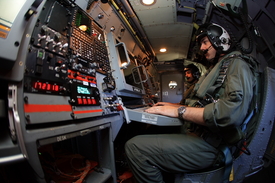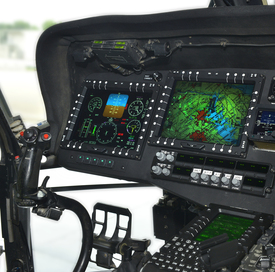Exelis was demonstrating its latest persistent wide area surveillance solution during IDEX 2015. The high definition CorvusEye 1500 system captures two frames per second over a larger area than full motion video (FMV) solutions handle. These systems typically capture 30 frames a second. The new Wide Area Motion Imagery (WAMI) system can observe activity, track movement and gather intelligence over a city sized area. The WAMI sensor used is either a CorvusEye 1500C visual color sensor or a CorvusEye 1500CM sensor that is capable of capturing both visual color and IR imagery. CorvusEye can handle up to 10 stare points simultaneously that zoom in and view areas of interests. In addition, the system can also support activity based intelligence with forensic capabilities establishing trends and interconnected patterns of life including social interactions, origins of travel and destinations. Live imagery could also be transmitted to handheld devices of tactical users and provide analysts with forensic access for mission planning. This year, Exelis introduces optional plug-ins that will provide the possibility to automate tasks without requiring human intervention. This way users can be alerted automatically of suspicious activity within user placed boxes of interest or tripwires. Movement could then be tracked automatically while a FMV sensor could be tasked to follow a vehicle. This is enabled by the Exelis CogniSense real time analytical framework that processes multi-sensor data and enables real time sensor cueing, cross correlation and autonomous analytics. The CorvusEye 1500 system has a low SWaP (Size, Weight and Power) which makes it well suited for both manned and unmanned platforms.
Pieter Bastiaans







.jpg)


